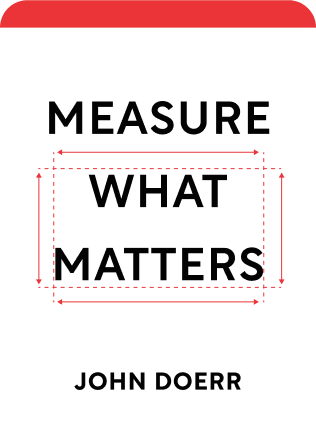

This article is an excerpt from the Shortform summary of "Measure What Matters" by John Doerr. Shortform has the world's best summaries of books you should be reading.
Like this article? Sign up for a free trial here .
What is the OKR methodology? How does the OKR process work, and why should you adopt OKRs into your business model?
The OKR methodology is a way to set and follow business goals using a metrics system that relies on objectives and key results. The OKR model has numerous benefits.
Keep reading to learn how the OKR methodology works, and how you can implement it in your own business.
Identify Your Objectives With The OKR Methodology
The first step of the OKR methodology is figuring out the “Os,” your objectives. Every individual and team in the company will have their own objectives and key results, but in order for these OKRs to be meaningful, they need to align with the organization’s highest objectives, so start with these.
In the OKR system, to determine your organization’s highest objectives, ask, “What are the most important tasks we need to accomplish in the next three months, the next six months, and the next year?”
You can’t do everything. Answering these questions gets you focused on the few things that have to get done for the company to succeed. These are your objectives.
Your biggest priorities in the OKR methodology, the goals that everyone in the organization is working toward, are your organization-level objectives, or company-wide objectives.
Once you’ve identified your organization-level objectives, departments, teams, and individuals can identify their own objectives. These objectives often feed into and support organization-level objectives, so determining them is a matter of starting with the top objectives and figuring out what sub-goals you need to meet to achieve them. In the OKR system, this synergy is important.
At each tier, focus on three to five objectives. Any more than this, and your focus will be too dispersed.
Identify Key Results
After you know your priorities in the OKR methodology, your objectives, you can start to plan how to achieve them. Key results are the steps that get you there. For each objective, decide on three to five key results—sub-goals that are specific, measurable, and time-bound, and that collectively ensure you’ll attain your objective.
Align and Connect: How to Use the OKR Methodology
Use these general guidelines to help your team or organization stay aligned in the OKR process.
- Allow individuals to set roughly half of their own objectives and most of their key results. People who choose their goals take more responsibility toward getting themselves there.
- For the objectives that come from the top, you as the manager should clearly demonstrate how the employee’s objective connects to the company’s top priorities.
- Use meetings to reiterate why certain OKRs are important.
- Encourage cross-departmental OKRs for horizontal alignment. When different departments depend on one another to meet objectives, make sure those dependencies are explicit.
How to Implement OKRs for tracking in the OKR system: OKRs are always measurable, and at the end of each OKR cycle you score them. This is an important part of the OKR model. These scores help you track your progress, and they indicate when you need to double down on a particular goal or when you should revise or abandon it.
Unlike traditional business goals, OKRs aren’t set in stone. OKRs are “living, breathing organisms,” and there are three phases to tracking an OKR’s life cycle: setup, midlife tracking, and wrap-up.
The Setup Phase
The setup phase is when you decide what cloud-based system you’ll use to track your OKRs, determine the length of your OKR cycles, and designate your “OKR shepherd.” Refer to “Checklist: Focus and Commit” in Chapter 4. All of these actions will make tracking possible in the next phase.
The Midlife Tracking Phase
Studies show that people are motivated by tangible signs of their progress toward a goal, and that making progress can be more motivating than receiving a bonus, receiving public recognition, or even achieving the goal itself.
But for progress to be motivating, people need to see it. This is why midlife check-ins are so important. During this phase, employees check-in with their managers to discuss their OKR progress.
Ideally, check-ins happen weekly, monthly, quarterly, and annually. The frequency of these check-ins will depend on the length of time needed to achieve each key result, the quality of communication in the team, the size of the group, how geographically spread out it is, and current business needs. In addition to one-on-one meetings with employees and managers, teams and departments should meet regularly to evaluate progress toward objectives they share.
CFRs: The Tools of Continuous Performance Management
Just as OKRs are your tools for implementing Doerr’s improved goal-setting system, CFRs are your tools for implementing a continuous performance management system.
- C: Conversations between employees and managers
- F: Feedback both from and to managers and among peers
- R: Recognition from peers and managers for small and large contributions toward goals
In the OKR model, OKRs and CFRs reinforce one another. You need both the hard data of OKRs and the interpersonal relationships fostered by CFRs for your company to thrive.
Another benefit of the OKR methodology is that it’s easy ti implement, as long as you follow the OKR process and you create strong OKR goals.

———End of Preview———
Like what you just read? Read the rest of the world's best summary of John Doerr's "Measure What Matters" at Shortform .
Here's what you'll find in our full Measure What Matters summary :
- How Google uses OKRs to rally 100,000 employees in the right direction
- How to avoid setting useless OKRs, and how to set great ones
- Key subtle behaviors your team must master to make OKRs work






